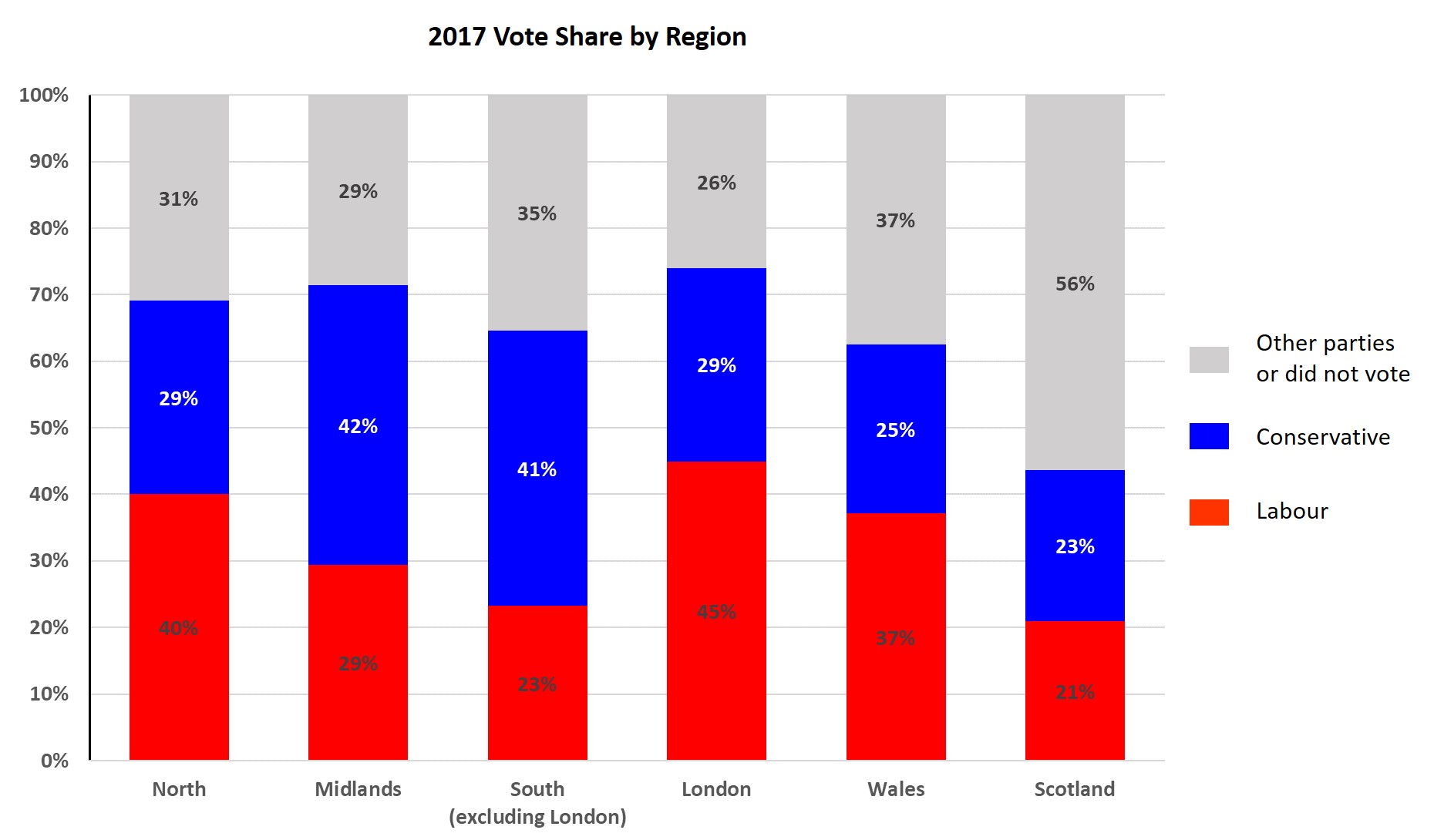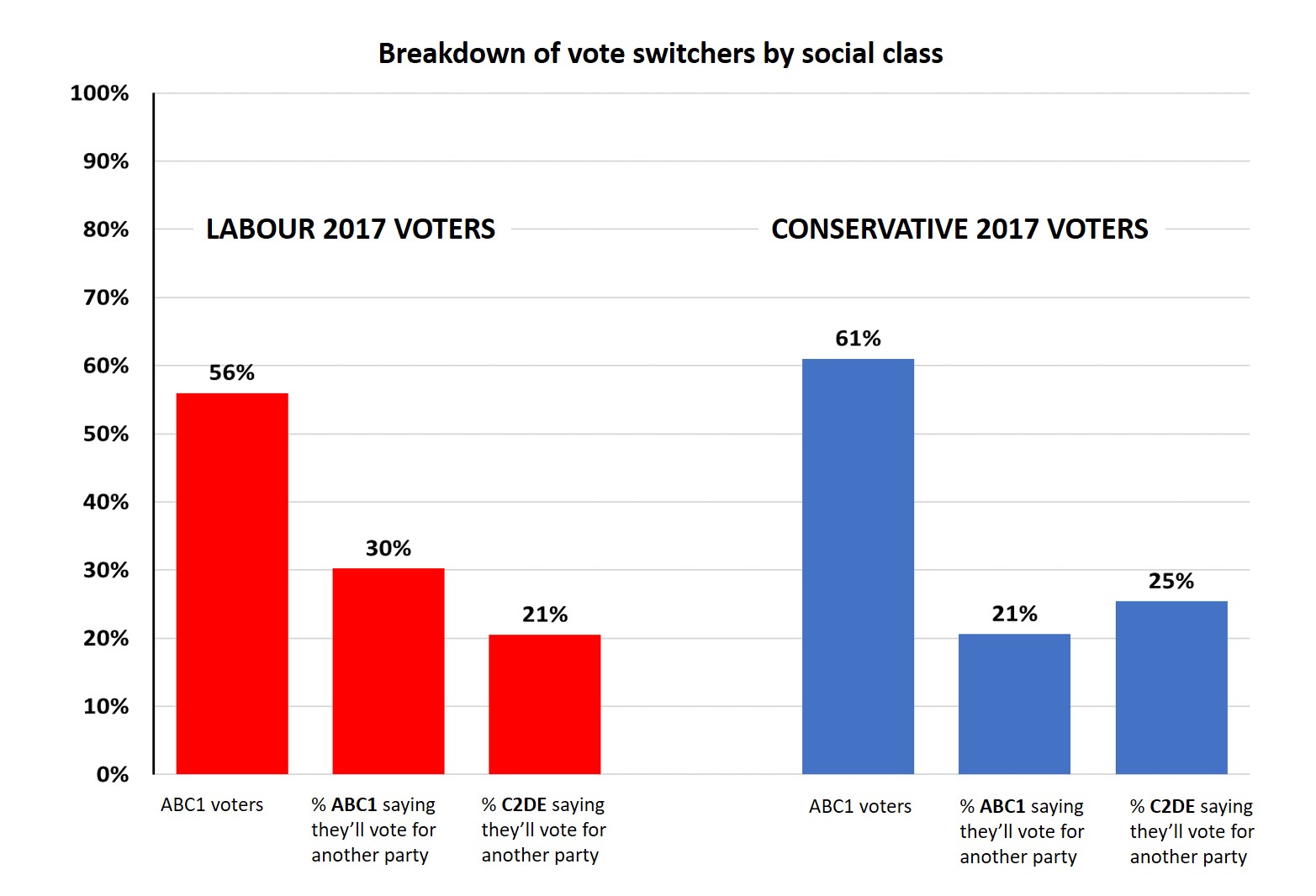Christina Pagel and Christabel Cooper analyse the results of a UCL survey (with fieldwork conducted by YouGov), which was generously funded by UCL Mathematics, UCL CORU and UCL’s Grand Challenge of Cultural Understanding. The data shows that as the preferred Brexit outcomes of Labour and Conservative voters harden, both parties stand to suffer in any imminent General Election. (See also the first post of this series of analysis and the results)
In new research funded by UCL, we carried out a survey (fieldwork by YouGov) of over 5000 representative UK voters at the end of March, asking them to rank four possible Brexit outcomes: Leaving with No Deal, Leaving with May’s Deal, Leaving with a Softer Brexit and Remain. The results showed a very divided country, with most Leave voters preferring No Deal and most other voters preferring Remain – with No Deal as the outcome they were most scared of.
Now that No Deal has been ruled out (for the time being at least) and the UK faces a longer extension, a General Election seems more likely given the seemingly insurmountable difficulty of finding a stable majority for any Brexit outcome in Parliament. So it seems pertinent to examine our survey results in the light of the two main parties: what do their voters want from Brexit and how is this affecting their voting intentions?
Regional distribution of voters
Both parties have distinct geographical areas where they dominate – for the Conservatives in the South West and South East (excluding London) and for Labour in the North and London. These patterns held true in 2017 as well.

This has created most tension for the Labour party, particularly its MPs in the North and the Midlands where many Labour constituencies voted to Leave while the party membership overwhelming supports Remain. The Labour party’s deliberately vague Brexit policy has tried to navigate this delicate situation.
However, when we look at how voters in each party voted in 2016 by region, it is clear that even in heavily Leave voting areas, the majority of Labour voters were Remainers.

The Conservative party voters were overwhelmingly Leave voters, even in Scotland and London which were the most balanced Conservative regions in terms of referendum vote.
What do voters want from Brexit?
Brexit preferences by party mirror their different voter bases and highlight quite how difficult it will be for the Labour and Conservative leaderships to find any Brexit compromise that will satisfy their respective voters.

Two thirds of Labour voters want to Remain in the EU with another 12% favouring a Softer Brexit – only 15% say they favour No Deal. On the hand almost three quarters of Conservative voters want a harder Brexit – either No Deal or May’s Deal. With No Deal now (seemingly) ruled out, Conservative voters will be far more dismayed than Labour voters and, presumably, give May little room to manoeuvre in the search for cross party compromise. On the hand, Labour voters wanting to Remain are likely to see a longer extension as an opportunity to push for that outcome and be even less likely to settle for a Softer Brexit let alone May’s Deal.
Have any voters changed their minds?
Several polls have shown most Leave voters and most Remain voters have not changed their minds. This is also true in our survey – but we do see a dramatic difference between the parties. Of Labour voters who chose Leave in 2016, fully 18% have changed their minds and say they now prefer Remain as their top outcome. In contrast only 4% Conservative Leave voters have changed their mind. One reason might be differences in economic circumstances between Leave voters in the parties:

Labour Leave voters are much more likely to be struggling financially compared to Conservative Leave voters – and those Labour voters that are, are much more likely to now want to Remain.
For Remain voters (not charted), the picture is the other way round: 28% of Conservative Remain voters now want a harder Brexit (either No Deal or May’s Deal) compared to only 5% of Labour voters. So just as Labour is becoming a more Remain party, the Conservatives are becoming a more Leave party.
What does this mean for the next election
About a third of voters in each party have not yet decided how they would vote in a new General Election, but examining those who have expressed their intention we see clear patterns reflecting the Brexit identities of each party’s voter base.

For Labour, at least a fifth of their voters in every region say they are going to vote for a different party – and in every region defecting voters are overwhelming plumping for parties holding a definite Remain position (assuming the bulk of the “Other” vote is likely to be Green, particularly in London and Scotland). Only in Wales is Labour losing significant voter share to UKIP and the Conservatives, and even that is outnumbered by those switching to Plaid Cymru, the Lib Dems and Others. The picture is particularly stark in Scotland where almost half of Labour voters are intending to vote for a different party, mostly the SNP. In London too, the Labour vote could be hit hard by a shift to the Liberal Democrats and the Greens.
The Conservatives on the whole have a more loyal voter base but are much more vulnerable than Labour to UKIP. There are few Conservative voters moving to Labour except in Scotland where Labour and the SNP are sharing the bulk of defecting Conservatives.
The class breakdown of voters switching away from their party is also interesting. For Labour, 56% of its vote in 2017 came from ABC1 voters – middle class and higher. And these are voters are more likely be switching away from Labour than C2DE voters. Consistent with the shift to more Remain parties, Labour has more to worry about in losing its middle class vote share than its working class vote share. Meanwhile, for the Conservatives the opposite is true, although the difference is smaller. More C2DE voters are switching away from the Conservatives than ABC1 voters – and this has less impact since 61% of the Conservative vote is from ABC1 voters.

Implications for the next few months
The results of our survey show that large numbers of voters in both of the main parties now tend to hold more extreme positions on Brexit than the leadership of those parties – nearly half of Conservative voters want No Deal, and two-thirds of Labour voters want to Remain. This has left both Tories and Labour vulnerable to losing votes to smaller parties in a future General Election and makes it unlikely that any compromise will emerge from the ongoing talks between May and Corbyn as this would require them to make a further shift away from the wishes of their voters. Yet at the same time, there is also a widespread desire “to get on with Brexit” which, under current parliamentary arithmetic, will require some kind of compromise. If a General Election does take place, the question for the party leaders is how far they will move to secure their core voters, and a potential stable majority, by adopting more divergent Brexit positions.
Christina Pagel is a Professor of operational research at UCL.
Christabel Cooper is a data analyst.
The survey was generously funded by UCL Mathematics, UCL Clinical Operational Research Unit and UCL’s Grand Challenge of Cultural Understanding.
Results of the survey can be found here: https://d25d2506sfb94s.cloudfront.net/cumulus_uploads/document/vwj42ojs63/UCL_Brexit_190326_w.pdf
Image credit: Tiocfaidh ár lá 1916 on Flickr (Creative Commons)
Note: The views expressed in this post are those of the author, and not of the UCL European Institute, nor of UCL.





Leave a comment